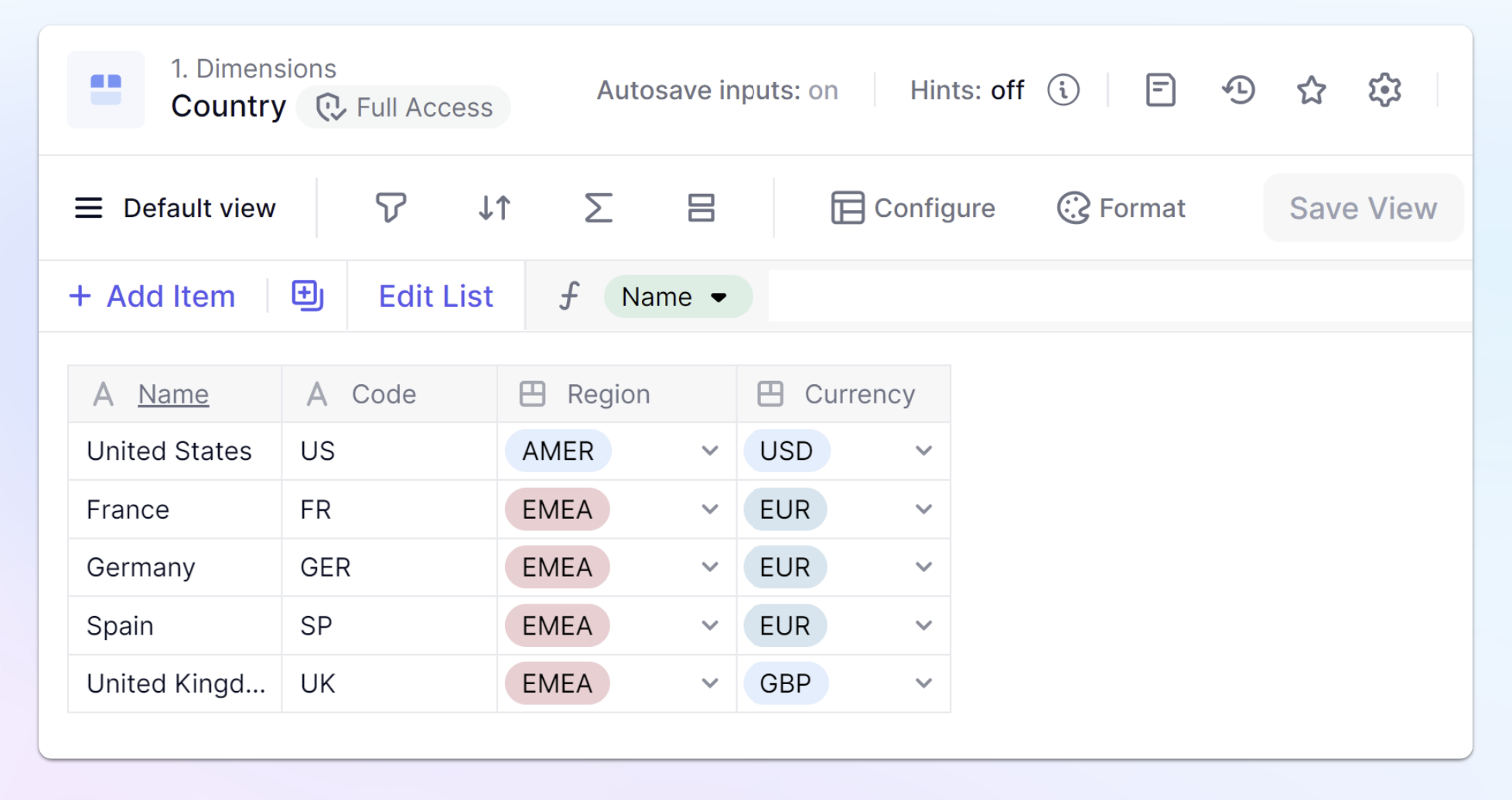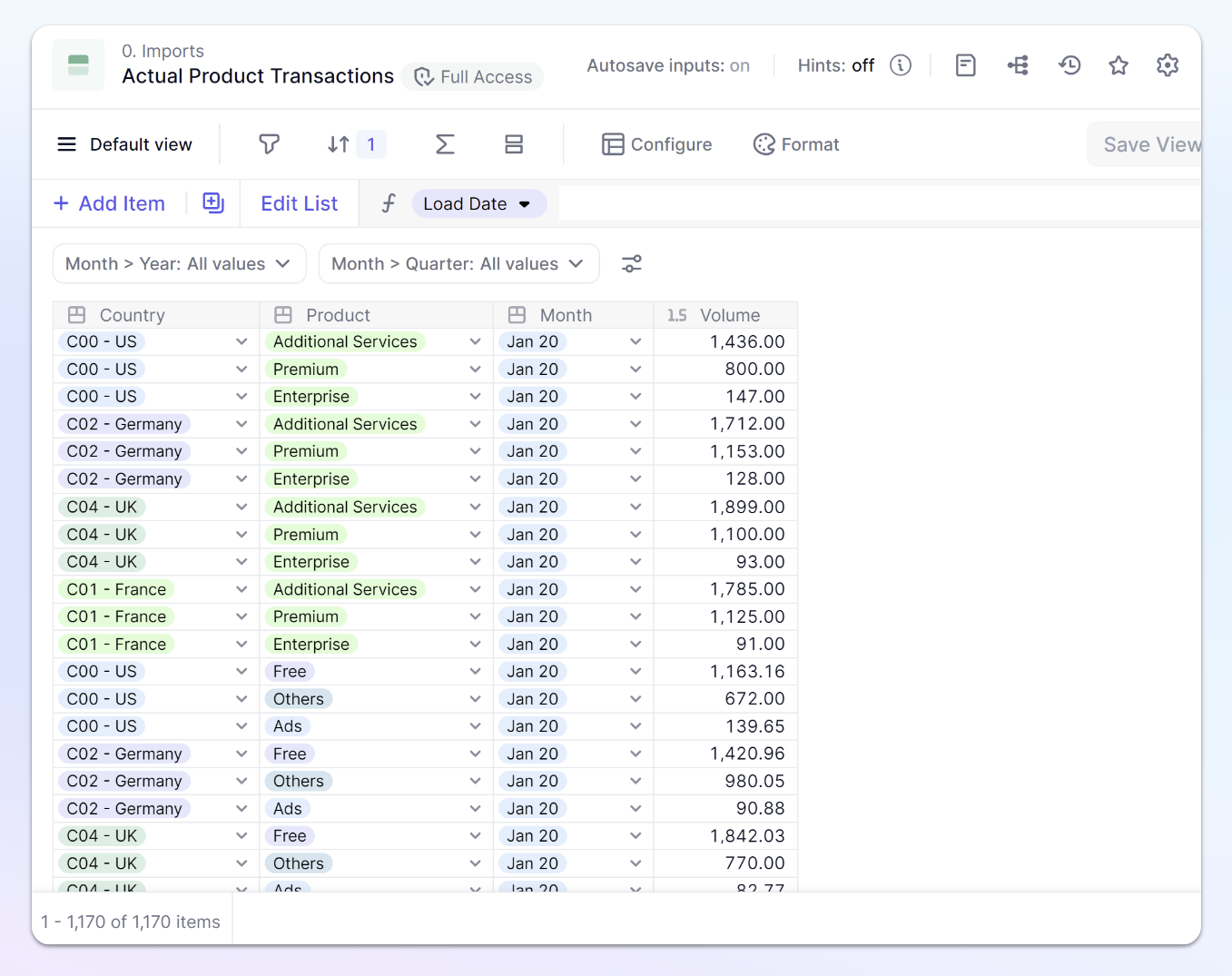Pigment has two types of lists: Dimension Lists and Transaction Lists. Each one has its own unique characteristics and uses, yet both contain Items and have Properties. This article explores both of these Lists.
Table of Contents
Here’s a 3-minute video on the difference between Dimension and Transactions Lists - see the this Academy course Pigment Lists.
What are Dimension Lists?
Dimension Lists are the axes used to analyze your data. They provide structure for Metrics by grouping similar Items, such as employees, products, or countries. Each Item in a Dimension List must be unique to ensure that Pigment can accurately reference it across multiple Metrics. These lists are reusable, making them efficient for various Metrics.

How can I identify Dimensions in a Block?
-
In the folder view of the navigation sidebar, hover over a Block to view its Dimensions.
-
Open the Metric and hover over the Dimensions next to its name.
-
To access Block Settings, click the Settings icon in the upper-right corner and select the Structure tab.
Examples of Dimension Lists
Here are some different examples of Dimension Lists you might have, organized by different areas. Each of these Lists contain individual Items. For example, in a Dimensions List called Products, this would contain an Item for each Product in your company.
- Calendar - months, quarters, and years.
- Geography - country, state, or region.
- Product - product or product category.
- Customer - customer or customer segment.
- Employee - employee or job role.
- Currency - currencies used in the application.
- Cost center - cost center or expense category.
- Sales channel - sales channel or distribution channel.
- Account - accounts that are sold into
- Asset class - asset class or investment category.
- Versions - Actual, Budget, Forecast.
What are Transactions Lists?
A Transactions List contains a list of Items that represents events or transactions. Often, these are transformed or grouped for analysis. For example, you might have a Transaction List showing individual bookings, which you might group by Account, Month, or Product. In this example, you use a Transaction List for the bookings, and use Dimension lists for Accounts, Products, and Months.
The image below shows a list of orders or accounting booking entries.

Examples of Transaction Lists
Here are some different examples of Transaction Lists you might have, organized by business function.
| Business Functions | Examples |
|---|---|
| Sales | Sales accepted opportunities Contracts, Account bookings |
| Finance | General ledger data Trial balance data Actual sales Bookings Accruals Asset register |
| HR | HRIS outputs Applicant tracking data |
| Carbon Accounting | Emissions factors |
More information:

